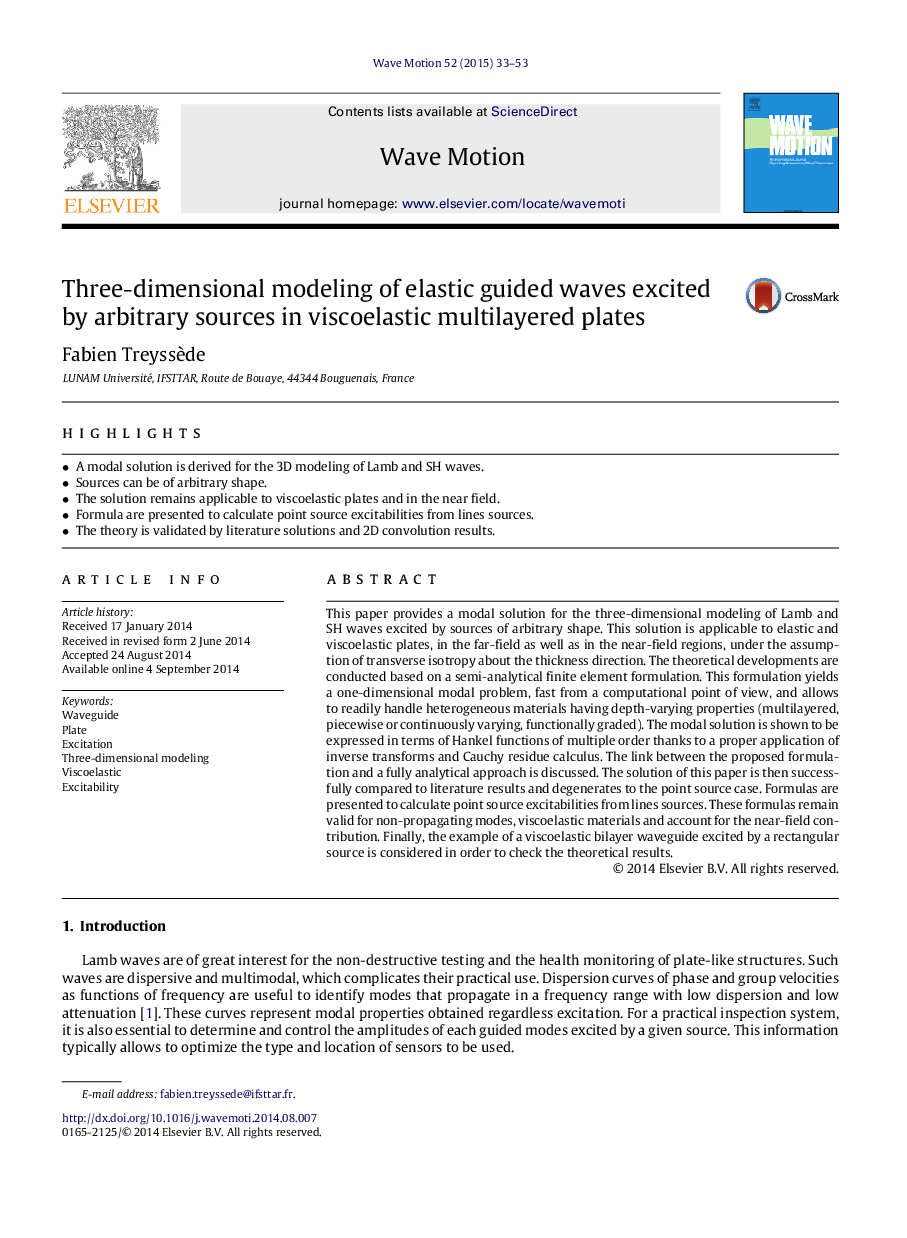| Article ID | Journal | Published Year | Pages | File Type |
|---|---|---|---|---|
| 1900483 | Wave Motion | 2015 | 21 Pages |
•A modal solution is derived for the 3D modeling of Lamb and SH waves.•Sources can be of arbitrary shape.•The solution remains applicable to viscoelastic plates and in the near field.•Formula are presented to calculate point source excitabilities from lines sources.•The theory is validated by literature solutions and 2D convolution results.
This paper provides a modal solution for the three-dimensional modeling of Lamb and SH waves excited by sources of arbitrary shape. This solution is applicable to elastic and viscoelastic plates, in the far-field as well as in the near-field regions, under the assumption of transverse isotropy about the thickness direction. The theoretical developments are conducted based on a semi-analytical finite element formulation. This formulation yields a one-dimensional modal problem, fast from a computational point of view, and allows to readily handle heterogeneous materials having depth-varying properties (multilayered, piecewise or continuously varying, functionally graded). The modal solution is shown to be expressed in terms of Hankel functions of multiple order thanks to a proper application of inverse transforms and Cauchy residue calculus. The link between the proposed formulation and a fully analytical approach is discussed. The solution of this paper is then successfully compared to literature results and degenerates to the point source case. Formulas are presented to calculate point source excitabilities from lines sources. These formulas remain valid for non-propagating modes, viscoelastic materials and account for the near-field contribution. Finally, the example of a viscoelastic bilayer waveguide excited by a rectangular source is considered in order to check the theoretical results.
